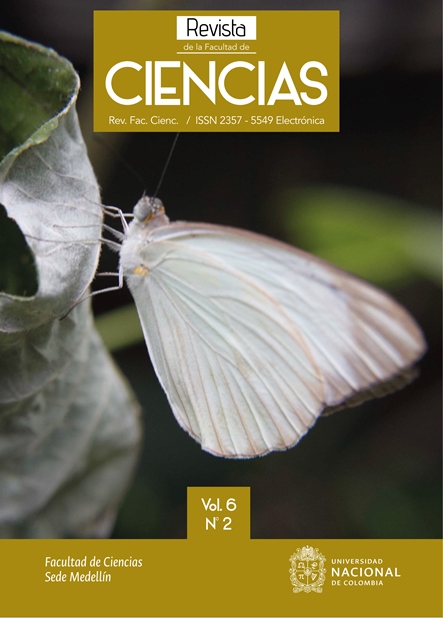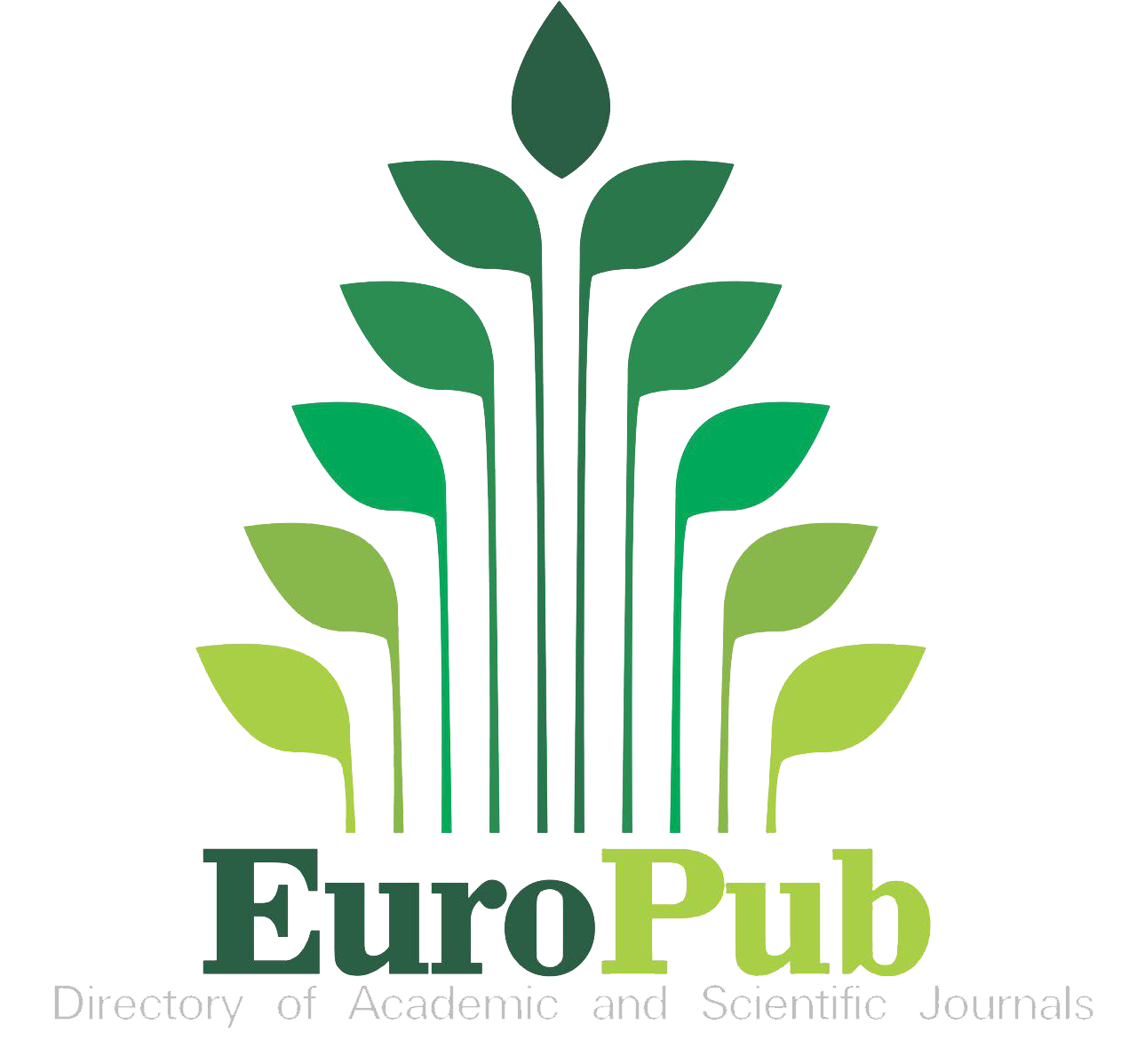Evaluación de métodos para erradicar hongos endófitos de raíces de semillas de Brachiaria decumbens Stapf
Evaluation of methods to eliminate root endophytic fungi from seeds of Brachiaria decumbens Stapf
DOI:
https://doi.org/10.15446/rev.fac.cienc.v6n2.64691Palabras clave:
Bolsas de germinación, hongos endófitos, métodos de desinfección, pastos, simbiosis (es)Disinfection methods, fungal endophytes, germination bags, grasses, symbiosis (en)
Descargas
La adaptación de plantas a ambientes extremos puede depender de la asociación con hongos endófitos de raíces. Sin embargo, las demostraciones del papel de esos endófitos en las simbiosis son limitadas si no se experimenta con plantas libres de ellos. Este estudio adaptó y evaluó un sistema de germinación masivo de semillas (SGMS) para probar métodos de desinfección de semillas de Brachiaria decumbens en estudios con hongos endófitos de raíces. Con este sistema se evaluaron en semillas métodos de desinfección externa (Soluciones de NaOCl al 5% ó Ca(ClO)2 al 7.14%, o calor [60C] en baño de agua u horno en varios tiempos), e interna (CaptanTMy Benomil 50WP (0.1 mg/ml)). El SGMS fue adecuado para el desarrollo de plántulas de B. decumbens ya que en cinco días se obtiene abundante material de trabajo (7 a 10 plántulas). Adicionalmente, los métodos de desinfección externa disminuyeron la actividad microbiológica superficial en semillas, comparado con el control (agua). Aplicar NaOCl (5%) resultó en mayor germinación y desarrollo de plántulas, pero no fue posible eliminar estructuras internas de hongos de las raíces, lo que sugiere una relación innata planta-endófito en pasto B. decumbens, que impide obtener plantas libres de endófitos. Algunas implicaciones experimentales son presentadas y discutidas a la luz de estos resultados.
Plant adaptation to extreme environmental conditions may depend on symbiotic root fungi. However research on this topic is hampered by the difficulties to obtain experimental plants free of endophytes. This study adapted and tested a system of seeds germination (SSG) of Brachiaria decumbens which allows evaluating seed disinfection methods for experimental purposes with this important tropical grass and its roots endophytes. The system called germination bags used inexpensive, locally available materials. Using seeds, this system evaluated external (5% NaOCl, heat, 7.14% Ca(ClO)2) and internal (CaptanTMand Benomil 50WP (0.1 mg/ml)) disinfection methods. The results indicated that our SSG is suitable for the development of B. decumbens seedlings and yields abundant working plant material in five days. In addition the three external disinfection methods tested reduced the outer microbial activity of the seeds as compared to a control treatment (water), with the use of 5% NaOCl showing the highest germination rate of seeds per bag. Fungicide use as internal disinfection method did not eliminate root fungal internal structures, suggesting an innate plant-endophyte relationship on B. decumbens grass that prevents to study plants without the presence of endophytes. Further experimental consequences of these results are discussed.
Referencias
Alarcón, A. & Ferrera-Cerrato, R. (1999). Manejo de la micorriza arbuscular en sistemas de propagación de plantas frutícolas. Terra Lationoamericana, 17(3), 179-191.
Barney, D. (2003). Effects of light, surface sterilization, and fungicides on the germination of black huckleberry seeds. Small Fruits Review, 2(2), 73-80.
Barrow, J. (2003). Atypical morphology of dark septate fungal root endophytes of Bouteloua in arid southwestern USA rangelands. Mycorrhiza, 13(5), 239-247.
Barrow, J.; Osuna, P. & Reyes, I. (2004). Fungal endophytes intrinsically associated with micropropagated plants regenerated from native Boutelou aeriopoda Torr. and Atriplex canescens (Pursh) Nutt. In Vitro Cellular and Developmental Biology-Plant, 40(6), 608-612.
Bayman, P.; Gonzalez, E.; Fumero, J. & Tremblay, R. (2002). Are fungi necessary? How fungicides affect growth and survival of the orchid Lepanthes rupestris in the field. Journal of Ecology, 90(6), 1002-1008.
Biondini, M. (1988). Carbon and nitrogen losses through root exudation by Agropyron cristatum, A smithii and Bouteloua gracilis. Soil Biology and Biochemistry, 20(4), 477-482.
CABI (2017). Invasive Species Compendium. Wallingford, UK: CAB International. Disponible en: http://www.cabi.org/isc.
Cheplick, G. (2011). Endosymbiosis and population differentiation in wild and cultivated Lolium perenne (Poaceae). American Journal of Botany, 98(5), 829-838.
Ernst, M.; Mendgen, K. & Wirsel, S. (2003). Endophytic fungal mutualists: seed-borne Stagonospora spp. enhance reed biomass production in axenic microcosms. Molecular Plant-Microbe Interactions, 16(7), 580-587.
Gamalero, E.; Lingua, G.; Berta, G. & Lemanceau, P. (2003). Methods for studying root colonization by introduced beneficial bacteria. Agronomie, 23(5-6), 407-418.
Gamboa, M., Wen, S., Fetcher, N. & Bayman, P. (2005). Effects of fungicides on endophytic fungi and photosynthesis in seedlings of a tropical tree, Guarea guidonia (Meliaceae). Acta Biológica Colombiana, 10(2), 41-48.
Gibert, A. & Hazard, L. (2011). Endophyte infection of Festuca eskia enhances seedling survival to drought and cutting at the expense of clonal expansion. Journal of Plant Ecology, 4(4), 201-208.
Giovanetti, M. & Mosse, B. (1980). An evaluation of techniques for measuring vesicular arbuscular mycorrhizal infection in roots. New Phytologist, 84(3), 489-500.
Groleau-Renaud, V.; Plantureux, S. & Guckert, A. (1998). Influence of plant morphology on root exudation of maize subjected to mechanical impedance in hydroponic conditions. Plant and Soil, 201(2), 231-239.
Heist, E.; Nesmith, W.; & Schardl, C. (2002). Interactions of Peronospora tabacina with roots of Nicotiana spp. in gnotobiotic associations. Phytopathology, 92(4), 400-405.
Henry, A.; Doucette,W.; Norton, J.; Jones, S.; Chard, J.& Bugbee, B. (2006). An axenic plant culture system for optimal growth in long-term studies. Journal of Environmental Quality, 35(2), 590-598.
Hepper, C. (1981). Techniques for studying the infection of plants by vesicular-arbuscular mycorrhizal fungi under axenic conditions. New Phytologist, 88(4), 641-647.
Jumpponen, A. & Trappe, J. (1998). Dark septate endophytes: a review of facultative biotrophic rootcolonizing fungi. The New Phytologist, 140(2), 295-310.
Kannadan, S. & Rudgers, J. (2008). Endophyte symbiosis benefits a raregrass under low water availability. Functional Ecology, 22(4), 706-713.
Kloeper, J. & Schroth, M. (1981). Plant growth-promoting rhizobacteria and plant growth under gnotobiotic conditions. Phytopathology, 71(6), 642-644.
Knudson, L. (1929). Seed germination and growth of Calluna vulgaris. New Phytologist, 28(5), 369-376.
Latch, G. & Christensen, M. (1982). Ryegrass endophyte, incidence, and control. New Zealand Journal of Agricultural Research, 25(3), 443-448.
Li, X.; Ren, A.; Han, R.; Yin, L.; Wei, M. & Gao, Y. (2012). Endophyte-mediated effects on the growth and physiology of Achnatherum sibiricum are conditional on both N and P availability. PloS One, 7(11), e48010.
Mergulhao, A.; Burity, H.; Tabosa, J.; Figueiredo, M. & Maia, L. (2001). Salt stress response of Brachiaria plants with and without inoculation of arbuscular mycorrhizal fungi. Agrochimica-Pisa-, 45(1/2), 24-31.
Misaghi, I. & Donndelinger, C. (1990). Endophytic bacteria in symptom-free cotton plants. Phytopathology, 80(9), 808-811.
Newsham, K.; Upson, R. & Read, D. (2009). Mycorrhizas and dark septate root endophytes in polar regions. Fungal Ecology, 2(1), 10-20.
Porras, A.; Herrera, J.; Sinsabaugh, R.; Odenbach, K.; Lowrey, T. & Natvig, D. (2008). Novel root fungal consortium associated with a dominant desert grass. Applied and Environmental Microbiology, 74(9), 2805-2813.
Proost, R. & Smit, D. (2013). Fungicide resistance management in corn, soybean, and wheat
in Wisconsin. University of Wisconsin. [Fecha de consulta: Marzo de 2015]. Disponible en:
http://ipcm.wisc.edu/download/pubsPM/A3878FungicideResistance.pdf. 1-8.
Rasband, W. (2007). IMAGEJ, US. [En línea]. National Institutes of Health, Bethesda, Maryland, USA. [Consultada en Agosto de 2014]. Disponible en: http://rsbweb.nih.gov/ij/.2007.
Rayner, M. (1929). The biology of fungus infection in the genus Vaccinium. Annals of Botani, 43(169), 56-69.
Redman, R.; Sheehan, K.; Stout, R.; Rodriguez, R. & Henson, J.(2002). Thermotolerance generated by plant/fungal symbiosis. Science, 298(5598), 1581-1581.
Rodriguez, R.; Redman, R. & Henson, J. (2004). The role of fungal symbioses in the adaptation of plants to high stress environments. Mitigation and Adaptation Strategies for Global Change, 9(3), 261-272.
Rodriguez, R.; Freeman, D.; McArthur, E.; Kim, Y. & Redman, R. (2009). Symbiotic regulation of plant growth, development and reproduction. Communicative and Integrative Biology, 2(2), 141-143.
Sandnes, A. & Eldhuset, T. (2003). Soda glass beads as growth medium in plant cultivation experiments. Journal of Plant Nutrition and Soil Science, 166(5), 660-661.
Sauer, D. & Burroughs, R. (1986). Disinfection of seed surfaces with sodium hypochlorite. Phytopathology, 76(7), 745-749.
Simons, M.; Van Der Bij, A.; Brand, I.; De Weger, L.; Wijffelman, C. & Lugtenberg, B. J. (1996).
Gnotobiotic system for studying rhizosphere colonization by plant growth-promoting Pseudomonas bacteria. Molecular plant-microbe interactions: MPMI, 9(7), 600-607.
Tamayo, D. (2017). Papel de hongos endófitos septados oscuros en la tolerancia del pasto Brachiaria decumbens Stapf a condiciones ambientales extremas de sequía y baja fertilidad general del suelo (Tésis de maestría). Universidad Nacional de Colombia-Sede Medellín.
Vierheilig, H.; Coughlan, A.;Wyss, U. & Piche, Y. (1998). Ink and Vinegar, a Simple staining technique for arbuscular-mycorrhizal fungi. Applied and environmental microbiology, 64(2), 5004-5007.
Wali, P.; Helander, M. & Saikkonen K. (2011). Manipulation of EpichlöeNeotyphodium-endophyte infection in grasses: elimination of endophytes by heat treatment. Prospects and Applications for Plant-Associated Microbes. A Laboratory Manual, Part B: Fungi.Pirttilä, AM, Sorvari, S.(eds), 199-201.
Wiewióra, B., ˙ Zurek, G. & Pa´nka, D. (2015). Is the vertical transmission of Neotyphodium lolii in perennial ryegrass the only possible way to the spread of endophytes?. PloS One, 10(2), e0117231.
Cómo citar
APA
ACM
ACS
ABNT
Chicago
Harvard
IEEE
MLA
Turabian
Vancouver
Descargar cita
Licencia
Derechos de autor 2017 Revista de la Facultad de Ciencias

Esta obra está bajo una licencia internacional Creative Commons Atribución-NoComercial-SinDerivadas 4.0.
Los autores o titulares del derecho de autor de cada artículo confieren a la Revista de la Facultad de Ciencias de la Universidad Nacional de Colombia una autorización no exclusiva, limitada y gratuita sobre el artículo que una vez evaluado y aprobado se envía para su posterior publicación ajustándose a las siguientes características:
1. Se remite la versión corregida de acuerdo con las sugerencias de los evaluadores y se aclara que el artículo mencionado se trata de un documento inédito sobre el que se tienen los derechos que se autorizan y se asume total responsabilidad por el contenido de su obra ante la Revista de la Facultad de Ciencias, la Universidad Nacional de Colombia y ante terceros.
2. La autorización conferida a la revista estará vigente a partir de la fecha en que se incluye en el volumen y número respectivo de la Revista de la Facultad de Ciencias en el Sistema Open Journal Systems y en la página principal de la revista (https://revistas.unal.edu.co/index.php/rfc/index), así como en las diferentes bases e índices de datos en que se encuentra indexada la publicación.
3. Los autores autorizan a la Revista de la Facultad de Ciencias de la Universidad Nacional de Colombia para publicar el documento en el formato en que sea requerido (impreso, digital, electrónico o cualquier otro conocido o por conocer) y autorizan a la Revista de la Facultad de Ciencias para incluir la obra en los índices y buscadores que estimen necesarios para promover su difusión.
4. Los autores aceptan que la autorización se hace a título gratuito, por lo tanto renuncian a recibir emolumento alguno por la publicación, distribución, comunicación pública y cualquier otro uso que se haga en los términos de la presente autorización.
5. Todos los contenidos de la Revista de la Facultad de Ciencias, están publicados bajo la Licencia Creative Commons Atribución – No comercial – Sin Derivar 4.0.
MODELO DE CARTA DE PRESENTACIÓN y CESIÓN DE DERECHOS DE AUTOR






















